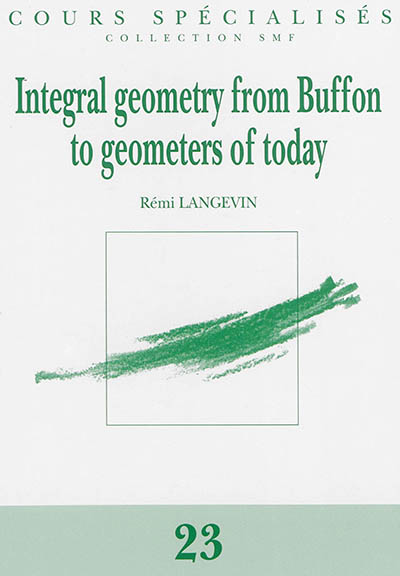en savoir plus

Permet à tous ses détenteurs d'obtenir 5% de réduction sur tous les livres lors du retrait en magasin (réduction non cumulable avec les réductions de type étudiant).
Offre également un certain nombre d'avantages auprès de nos partenaires.
Avec les favoris, retrouvez dans un espace les sélections effectuées au fur et à mesure de vos navigations dans le site.
Constituez pour votre usage personnel vos listes de livres en prévisions d'achats futurs et votre sélection d'articles, dossiers, événements, vidéos ou podcasts préférés ou à découvrir plus tard...
Il suffit simplement de cliquer sur "Ajout Favori" sur chaque page qui vous intéresse pour les retrouver ensuite dans votre espace personnel.
Requiert un compte Mollat
Requiert un compte Mollat
Integral geometry from Buffon to geometers of today
Auteur : Rémi Langevin
en savoir plus
Résumé
Un ouvrage consacré à l'histoire de la géométrie intégrale, aussi appelée théorie des probabilités géométriques, qui a accompagné pendant plus de deux siècles le développement des probabilités, de la théorie de la mesure et de la géométrie. ©Electre 2025
Fiche Technique
Paru le : 15/12/2015
Thématique : Mathématiques Appliquées
Auteur(s) : Auteur : Rémi Langevin
Éditeur(s) :
Société mathématique de France
Collection(s) : Cours spécialisés
Série(s) : Non précisé.
ISBN : 978-2-85629-822-0
EAN13 : 9782856298220
Reliure : Broché
Pages : 284
Hauteur: 25.0 cm / Largeur 18.0 cm
Poids: 0 g

